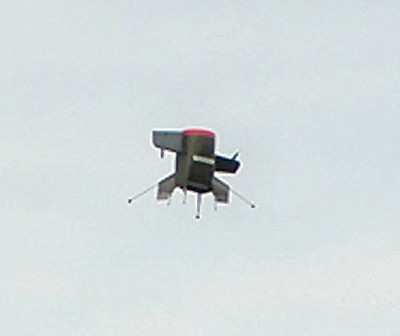Tue, Aug 29, 2023
Boeing's Studious Subsidiary Looks Back on Past Projects
Aurora Flight Sciences took a moment to look back on some of its more intriguing resume moments, celebrating 30 years in experimental aviation.

Aurora looked back on its heritage of making "low-cost, high-performance aircraft" throughout its UAS developments like the Perseus Proof of Concept. Perseus was a battery-powered, autonomous aircraft designed under NASA's Small High-Altitude Science Aircraft (SHASA) program, which later evolved into the Environmental Research Aircraft and Sensor Technology (ERAST) project. The aim at the time was to develop a cost-effective, slow-flying UAV with the ability to support long-term science missions at altitudes above 60,000 ft. Under the ERAST program, the project forked into 4 different models, between the original Proof, Perseus A and B, and the THeseus. Later versions added more endurance and better high-altitude performance as they tweaked the airfoil and wingspan. Overall, the forms and designs look familiar today, looking much like any other uncrewed aircraft on the market in 2023... except for the fact the latest and greatest of the ERAST line was built in 1996. Aurora figured out the plot early,
it seems.

Later on, Aurora set its sights on "optionally piloted aircraft" with Chiron and Centaur, general aviation airframes modified to semi autonomy. Beginning with a Cessna Skymaster, the program runs even today with a modified Diamond DA42. In 2003, Aurora set its sights on VTOL aircraft with an autonomous, ducted-fan UAV designated the GoldenEye series. They began as studies into the viability of free-wing tech and autonomous flight, only to expand in scope to become the basis for a number of VTOL aircraft designs for military and urban air mobility. Today, the lineage extends to the XV-24A LightningStrike, Excalibur unmanned air vehicle, and the electric passenger air vehicle (PAV).
The retrospective continues, with mentions of today's X-66A demonstrator amid additional treasures from the Aurora archive.
More News
Takeoff Roll The process whereby an aircraft is aligned with the runway centerline and the aircraft is moving with the intent to take off. For helicopters, this pertains to the act>[...]
“We’re proud of the hard work that went into receiving this validation, and it will be a welcome relief to our customers in the European Union. We couldn’t be mor>[...]
"Aircraft Spruce is pleased to announce the acquisition of the parts distribution operations of Wag-Aero. Wag-Aero was founded in the 1960’s by Dick and Bobbie Wagner in the >[...]
IDENT Feature The special feature in the Air Traffic Control Radar Beacon System (ATCRBS) equipment. It is used to immediately distinguish one displayed beacon target from other be>[...]
Aero Linx: Pararescue Air Force Pararescuemen, also known as PJs, are the only DoD elite combat forces specifically organized, trained, equipped, and postured to conduct full spect>[...]
 ANN's Daily Aero-Term (05.10.24): Takeoff Roll
ANN's Daily Aero-Term (05.10.24): Takeoff Roll Aero-News: Quote of the Day (05.10.24)
Aero-News: Quote of the Day (05.10.24) Aero-News: Quote of the Day (05.11.24)
Aero-News: Quote of the Day (05.11.24) ANN's Daily Aero-Term (05.11.24): IDENT Feature
ANN's Daily Aero-Term (05.11.24): IDENT Feature ANN's Daily Aero-Linx (05.11.24)
ANN's Daily Aero-Linx (05.11.24)




